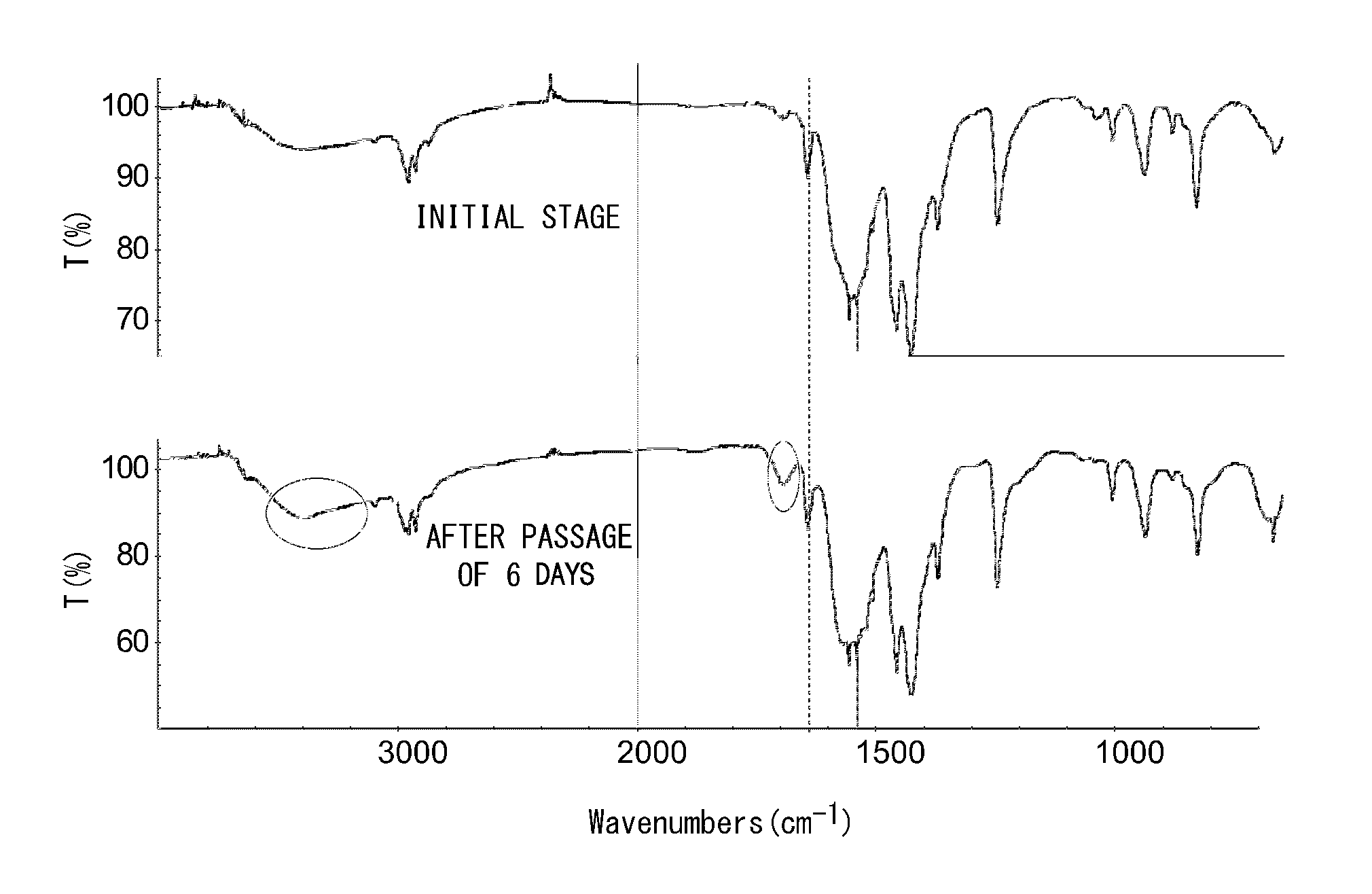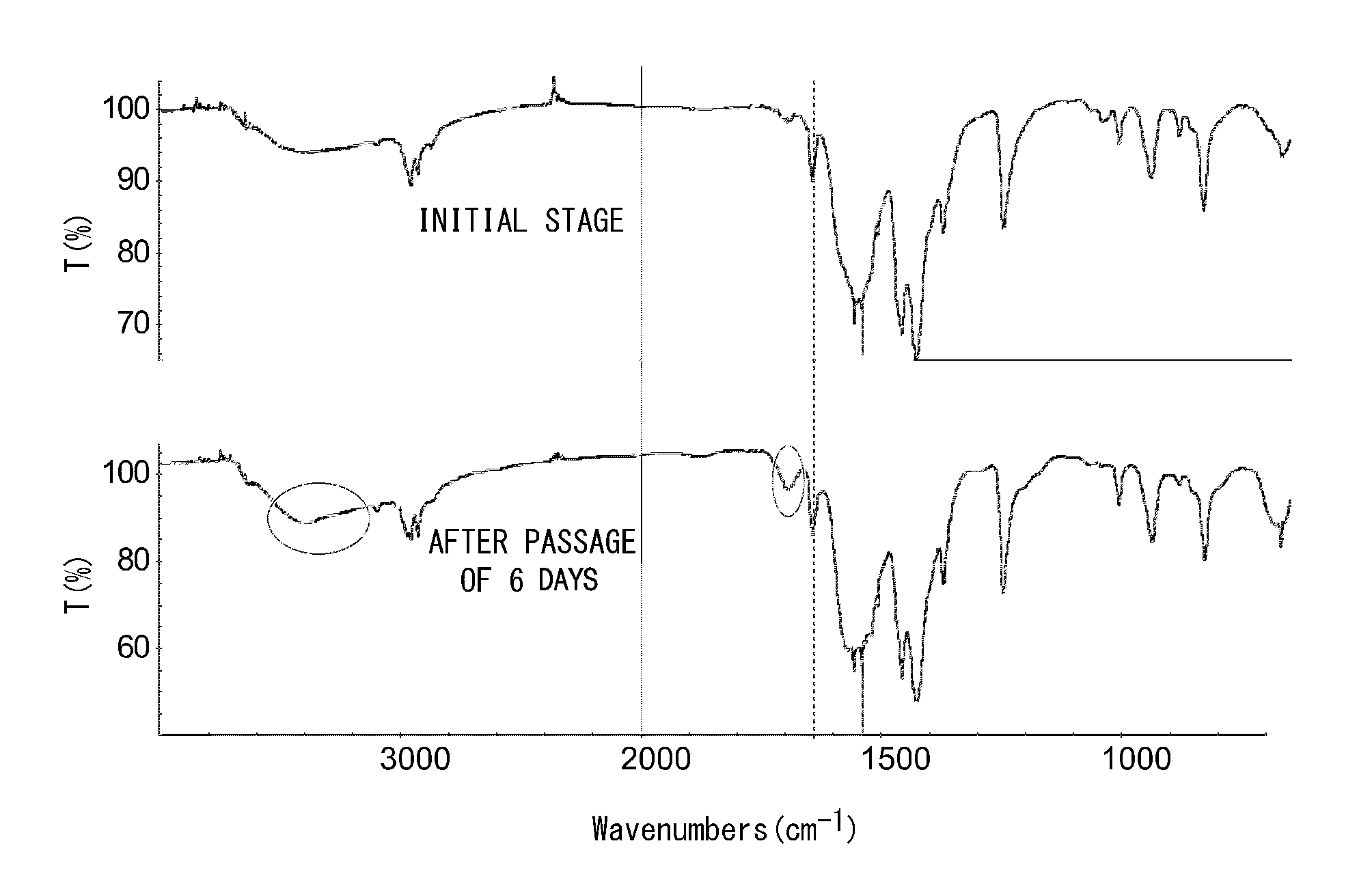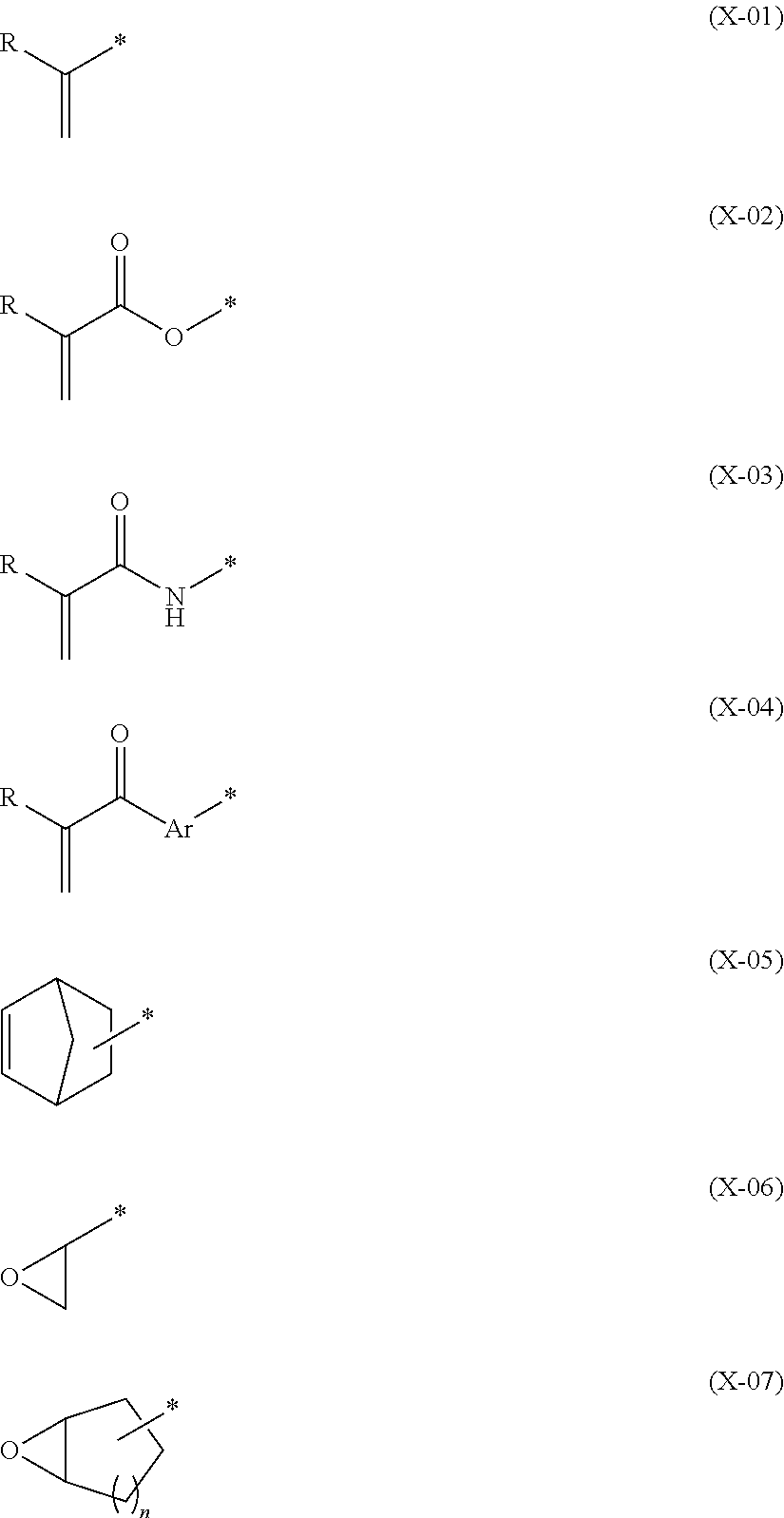Negative resist composition, method of forming resist pattern, and complex
a technology of resist composition and resist pattern, applied in the field of negative resist composition, can solve the problems of low euv light absorption of general use acrylic resin or the like, poor temporal stability of resist composition, and difficulty in obtaining resist pattern stably, etc., and achieve good temporal stability
- Summary
- Abstract
- Description
- Claims
- Application Information
AI Technical Summary
Benefits of technology
Problems solved by technology
Method used
Image
Examples
synthesis example 1
[0158]In a flask, hafnium butoxide (1.17 g), methacrylic acid (1.27 g) and dichloromethane (20 g) as a solvent were mixed and stirred at room temperature (23° C.) for 60 minutes. The obtained solution was washed with methyl tert-butyl ether (TBME), followed by filtration and drying under reduced pressure for 5 hours, thereby obtaining a complex (Hf-4) (produced amount: 1.26 g, yield: 73.3%).
[0159]As shown in FIG. 1 mentioned below, in the infrared absorption spectra obtained by the Fourier transform infrared (FT-IR) spectroscopy, the peak ascribed to the carbonyl moiety of methacrylic acid (generally observed at 1,700 cm−1) was shifted to around 1,600 cm−1 (position indicated by the vertical broken line in FIG. 1) (i.e., a shift characteristic of a complex), whereby it was confirmed that the conjugate base of the methacrylic acid coordinates to Hafnium to form a complex (Hf-4).
[0160]
synthesis examples 2 to 4
[0161]The same procedure as in Synthesis Example 1 was conducted, except that 3-(methacryloyloxy)-1-propanesulfonic acid, carboxymethyl methacrylate and 2-carboxyethyl methacrylate were respectively used instead of methacrylic acid, thereby obtaining a complex (Hf-1), a complex (Hf-2) and a complex (Hf-3).
[0162]In the infrared absorption spectra obtained by FT-IR spectroscopy with respect to each of the complexes, a shift of the peak ascribed to the carbonyl moiety of methacryloyl was observed (i.e., a shift characteristic of a complex), whereby it was confirmed that the conjugate bases of the respective acids coordinate to Hafnium atoms to respectively form a complex (Hf-1), a complex (Hf-2) and a complex (Hf-3).
[0163]
synthesis example 5
[0164]The same procedure as in Synthesis Example 1 was conducted, except that hafnium butoxide was replaced by an equimolar amount of zirconium butoxide, thereby obtaining a complex (Zr-4).
[0165]
PUM
| Property | Measurement | Unit |
|---|---|---|
| pKa | aaaaa | aaaaa |
| pKa | aaaaa | aaaaa |
| thickness | aaaaa | aaaaa |
Abstract
Description
Claims
Application Information
 Login to View More
Login to View More - R&D
- Intellectual Property
- Life Sciences
- Materials
- Tech Scout
- Unparalleled Data Quality
- Higher Quality Content
- 60% Fewer Hallucinations
Browse by: Latest US Patents, China's latest patents, Technical Efficacy Thesaurus, Application Domain, Technology Topic, Popular Technical Reports.
© 2025 PatSnap. All rights reserved.Legal|Privacy policy|Modern Slavery Act Transparency Statement|Sitemap|About US| Contact US: help@patsnap.com



